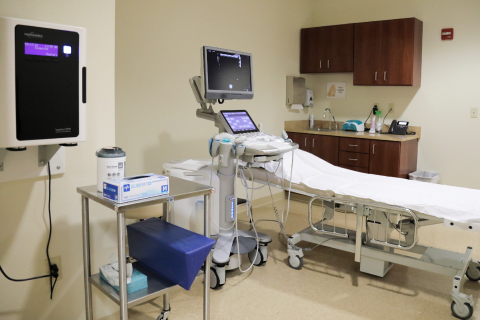 Current estimates say that one in eight women will experience breast cancer during their lifetime. Mammography is the best test available for finding small breast cancers. New biopsy methods now offer a safer, more reliable and less invasive alternative.
Current estimates say that one in eight women will experience breast cancer during their lifetime. Mammography is the best test available for finding small breast cancers. New biopsy methods now offer a safer, more reliable and less invasive alternative.
- Stereotactic Guided
- Ultrasound Guided
Stereotactic Guided
Stereotactic breast biopsy is an alternative to open or surgical biopsy. A sample of suspect breast tissue is precisely located with a computer-guided imaging system using x-ray. Two x-ray images of breast tissue are taken at different angles. A computer uses the images to locate the abnormality and calculate precise coordinates. Then the computer guides the radiologist in placing the needle at the exact target. Compared to surgery, stereotactic breast biopsy is also quicker, less painful, and less costly—there are fewer complications, and the procedure requires minimal recovery time. The entire biopsy is obtained through a tiny nick in the skin no more than 5mm in size. There is no need for sutures; the nurse or technologist will simply tape a small dressing to the site. Within days, the skin nick has healed, and there is no longer evidence of a biopsy.
Ultrasound Guided
You may need a breast ultrasound if the radiologist finds a suspicious area on the mammogram or if you or your doctor feels a lump in your breast. Ultrasound is the best way to tell if the finding is a simple cyst (just fluid). If this is the case you may not require further work up. However, if the area proves to be a solid (soft tissue) lesion, biopsy may be required. For your convenience, in conjunction with your physician, you can receive your ultrasound-guided breast biopsy during the same visit as your breast ultrasound.
An ultrasound-guided breast biopsy is a non-surgical, minimally invasive procedure used to obtain tissue samples for microscopic examination. Ultrasound guidance is used to find the area, which usually cannot be felt. The radiologist removes samples of breast tissue using a special needle. These tissue samples are sent to the pathologist for review. The patient’s healthcare provider will receive a pathology report several days after the biopsy and will review the results with the patient.



